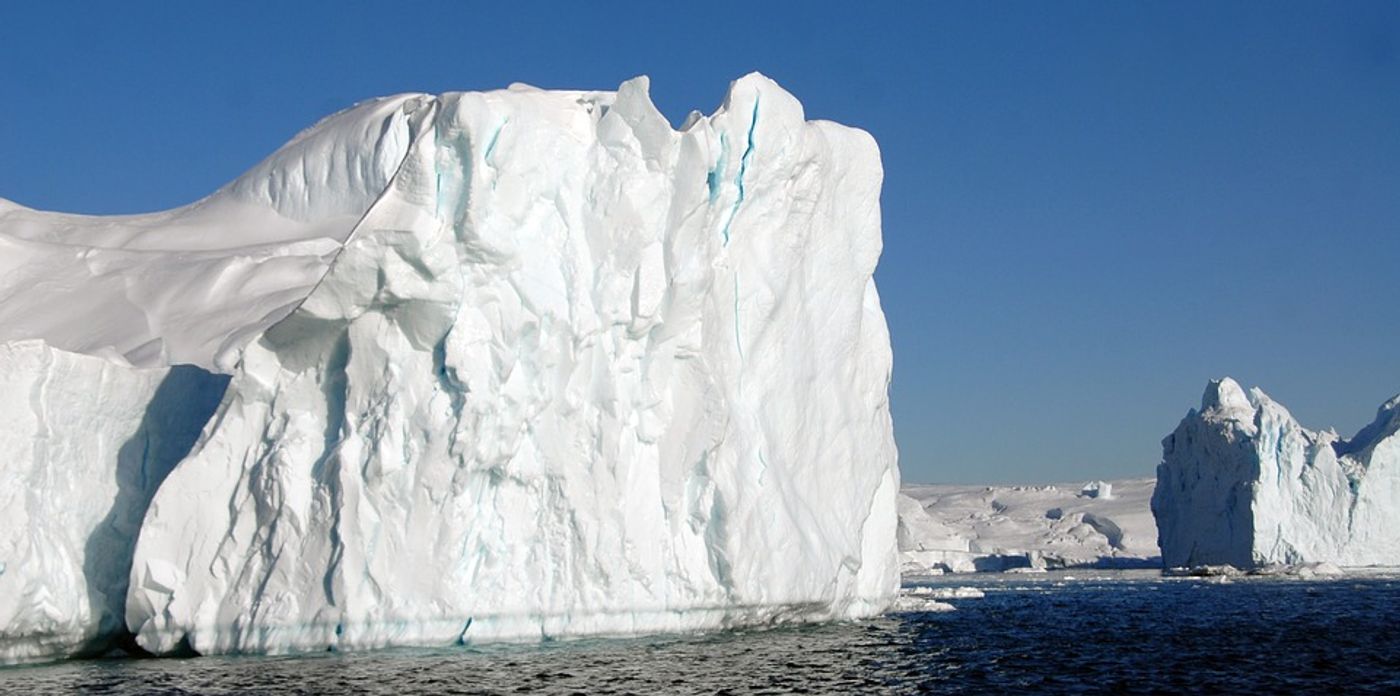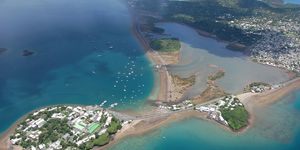A dangerous new form of ice calving
Scientists have identified a new method of ice calving called slumping, and it definitely is cause for alarm.
This research, published in Geology and supported by NASA, the National Science Foundation, and the New York University Abu Dhabi Research Institute, suggests that slumping could result in larger chunks of ice calving at a much faster rate. The phenomenon has been observed already on Jakobshavn and Helheim glaciers on Greenland's eastern coast.
According to Science Daily, “a slump occurs when a mass of rock or sediment loses some of its strength, breaks away from its neighboring land, and slides down a slope. Typically, slumps are marked by a steep scarp where the material broke away, followed by a block of material moved downslope.”
During a helicopter fly-over of the glaciers, the researchers noticed large cracks (called crevasses) on top of the 100-meter-tall ice cliffs that end the Helheim glacier. These crevasses indicate slump-prone landscape. "Geologists have spent decades -- centuries -- worrying about slumps," says Richard Alley, co-author of the study. "You've got a crevasse that serves as a head scarp and then you've got the stresses [within the ice] maximized down at the water level," he says.
The scientists tested their hypothesis by monitoring speed, position, and motion of the Helheim glacier during a calving event with real-aperture terrestrial radar interferometery. And here’s where the physics comes in.
What they saw was an ice-flow acceleration preceding an initial slump, followed by a rotating, full ice-thickness calving of the glacier – which brought the whole existing ice-cliff with it. "Because it's still attached at the back, it's going to rotate a little bit," Alley explains. As reported by Science Daily, “The rotation causes a crack to form at the bottom of the glacier as the ice flexes. In turn, the crack can weaken the ice, creating a large calving event -- all triggered by the initial slump on top of the ice cliff.”
Following these observations, the team developed models to predict which ice cliffs are most vulnerable to slumping. They found that that ice cliffs measuring greater than 100 meters of ice above water were likely to experience slumping.
Ice calving occurs when large parts of a glacier break off, as seen in the video above.
The fear with this new calving process is the speed with which it can occur – and the amount of ice it takes with it. If this phenomenon were to be occurring in Antarctica, where ice cliffs are much taller, glaciers could be even more susceptible to slumping. "The scary thing is that if pieces of west Antarctica start doing what Helheim is doing then over the next hundred years models indicate that we get rapid sea level rise at rates that surpass those predicted," says Alley. However, to figure that out, more research will be needed.
Sources: Science Daily, Geology









